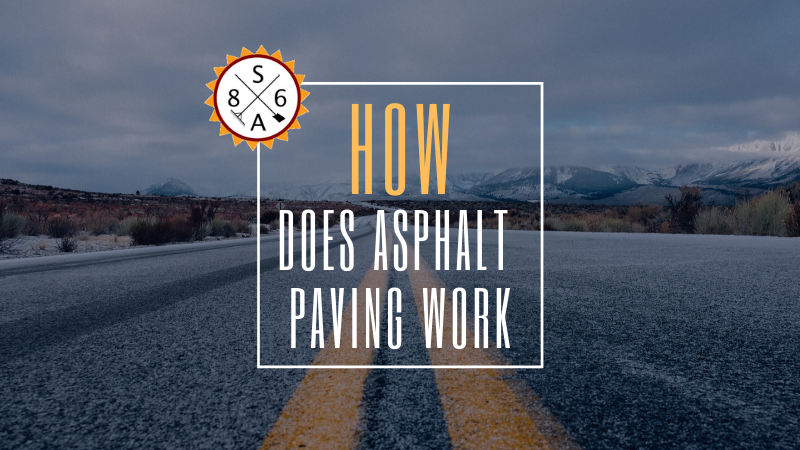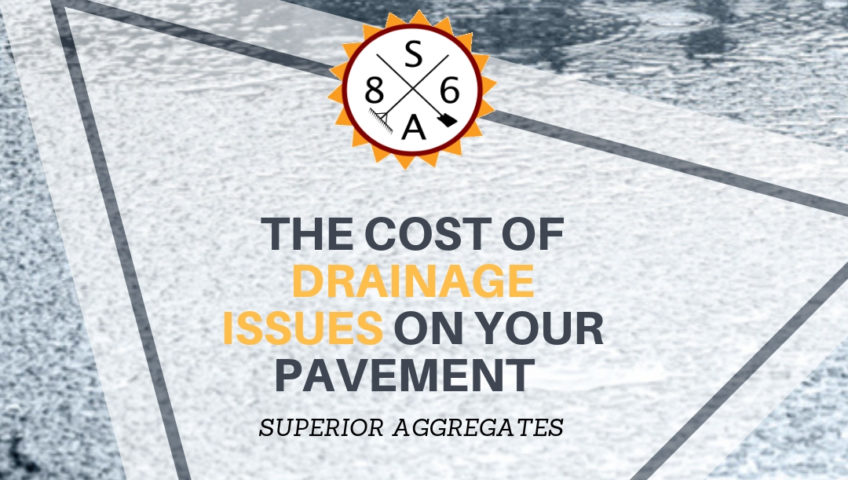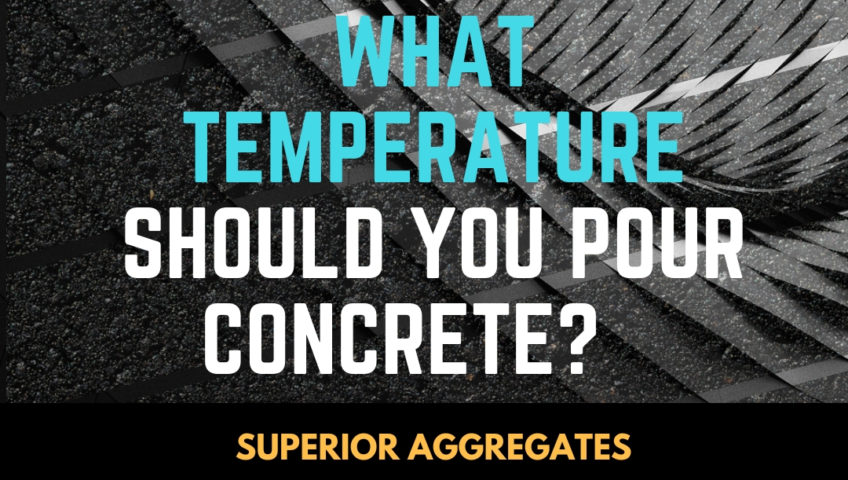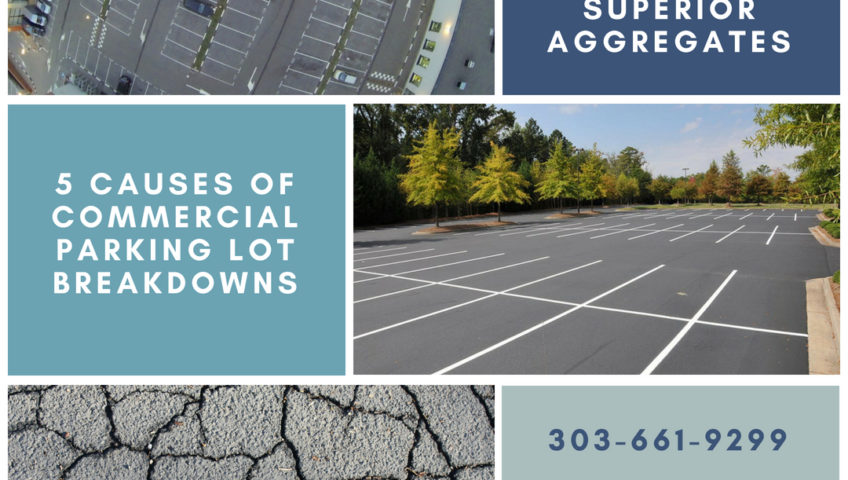
How Does Asphalt Paving Work
No matter if you are a beginner or a seasoned construction worker, knowing the proper method of asphalt paving can make or break your ability to be successful in this industry. No matter if you are starting your own company, work for someone else, or if you simply want to learn the basics of asphalt paving, you should know that the method is often the most important part of the job. That said, the following is a short guide on the basics of asphalt construction.
The 7 Areas of Pavement Construction
If you are searching for the basics of pavement construction, they are as follows:
- Site prep: Before you are able to begin paving, you must make sure the site is properly prepared. This can involve the replacement of areas that are extremely damaged, milling, applying of a leveling course, and more. Every site is different. However, you need to make sure each site is properly prepared before you can begin construction.
- Demolition and removal of old material: Next, you must demolish and remove any materials and debris that may stand to adversely affect your paving efforts. This can provide the use of bobcats, forklifts, large dump trucks, forklifts, heavy machinery, and more. The purpose of this step is to remove the existing surface, so your site can be prepared to receive the new asphalt.
- Grading: The purpose of this step is to make sure the area is prepared for the appropriate water drainage necessary to sustain the new pavement over time. Using various tools and technology (most often, laser transit), this step is done to ensure the new pavement will not be greatly damaged by rain, water, and other watery elements.
- Base: One of the most important parts of creating new asphalt pavement is to ensure that the sub-base is laid properly. As we know, having a stable foundation is vital to being able to properly build anything. This is because the sub-base serves as a stable support for new pavement. Additionally, the sub-base is also important because it can help protect the new asphalt from the winter elements.
- Binder: Next, the binder is added. This consists of a larger aggregate and oil mixture, which makes it exceptionally strong and durable. In short, the binder is considered to be the strength behind all new asphalt surfaces.
- Final surface layer: Once you had added the binder, it is now time to install the top layer of your asphalt surface. This is a smaller aggregate mixed with sand and soil. The combination of the previous material mixed with this layer creates the smooth, shiny, jet black asphalt, which most are accustomed to.
- Joints/transitions: Lastly, since most surfaces are connected to things such as driveways, parking lots, and roadways, asphalt construction workers must take the time to smooth the transition spaces between the new and older surfaces. This not only makes everything safer, smoother, and sturdier, but it also makes everything appear more uniform and professional.
Overall, there are various methods of asphalt paving. No matter which method you choose, you must be sure that you are completing each step with the utmost precision and professionalism. Otherwise, the new asphalt will become akin to old asphalt and will thus, will need to be redone by a contractor or company that can.
No matter if you are a beginner or a seasoned construction worker, knowing the proper method of asphalt paving can make or break your ability to be successful in this industry. No matter if you are starting your own company, work for someone else, or if you simply want to learn the basics of asphalt paving, you should know that the method is often the most important part of the job. That said, the following is a short guide on the basics of asphalt construction.
The 7 Areas of Pavement Construction
If you are searching for the basics of pavement construction, they are as follows:
- Site prep: Before you are able to begin paving, you must make sure the site is properly prepared. This can involve the replacement of areas that are extremely damaged, milling, applying of a leveling course, and more. Every site is different. However, you need to make sure each site is properly prepared before you can begin construction.
- Demolition and removal of old material: Next, you must demolish and remove any materials and debris that may stand to adversely affect your paving efforts. This can provide the use of bobcats, forklifts, large dump trucks, forklifts, heavy machinery, and more. The purpose of this step is to remove the existing surface, so your site can be prepared to receive the new asphalt.
- Grading: The purpose of this step is to make sure the area is prepared for the appropriate water drainage necessary to sustain the new pavement over time. Using various tools and technology (most often, laser transit), this step is done to ensure the new pavement will not be greatly damaged by rain, water, and other watery elements.
- Base: One of the most important parts of creating new asphalt pavement is to ensure that the sub-base is laid properly. As we know, having a stable foundation is vital to being able to properly build anything. This is because the sub-base serves as a stable support for new pavement. Additionally, the sub-base is also important because it can help protect the new asphalt from the winter elements.
- Binder: Next, the binder is added. This consists of a larger aggregate and oil mixture, which makes it exceptionally strong and durable. In short, the binder is considered to be the strength behind all new asphalt surfaces.
- Final surface layer: Once you had added the binder, it is now time to install the top layer of your asphalt surface. This is a smaller aggregate mixed with sand and soil. The combination of the previous material mixed with this layer creates the smooth, shiny, jet black asphalt, which most are accustomed to.
- Joints/transitions: Lastly, since most surfaces are connected to things such as driveways, parking lots, and roadways, asphalt construction workers must take the time to smooth the transition spaces between the new and older surfaces. This not only makes everything safer, smoother, and sturdier, but it also makes everything appear more uniform and professional.
Overall, there are various methods of asphalt paving. No matter which method you choose, you must be sure that you are completing each step with the utmost precision and professionalism. Otherwise, the new asphalt will become akin to old asphalt and will thus, will need to be redone by a contractor or company that can.




